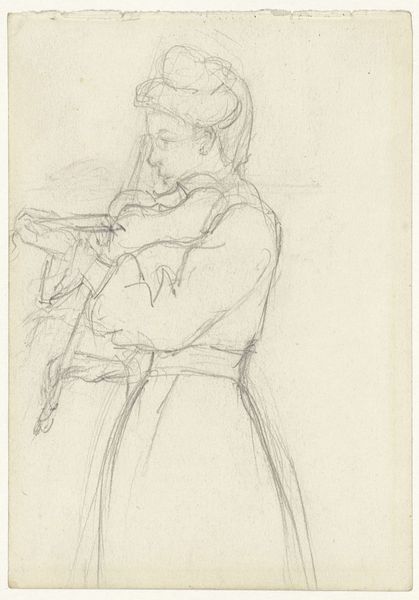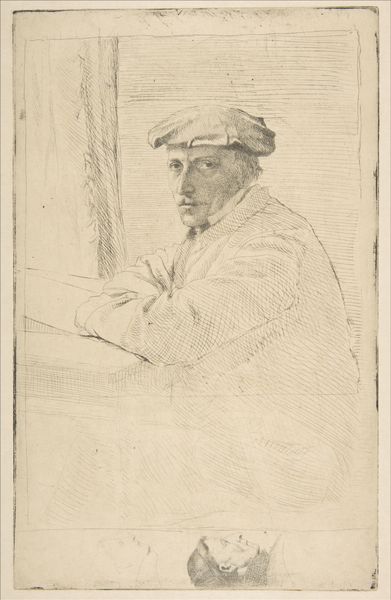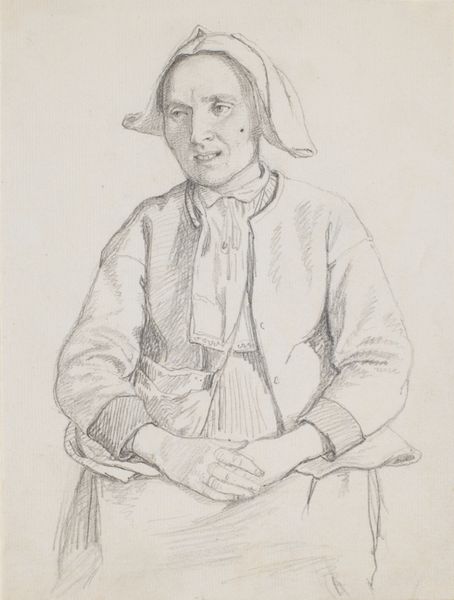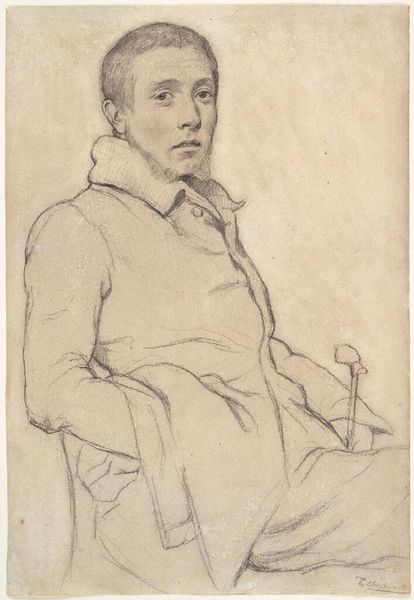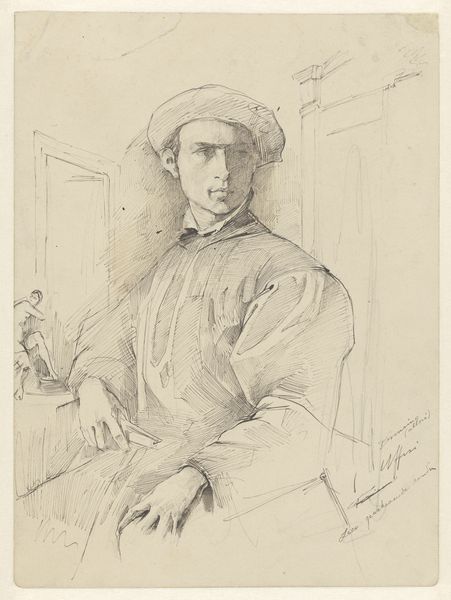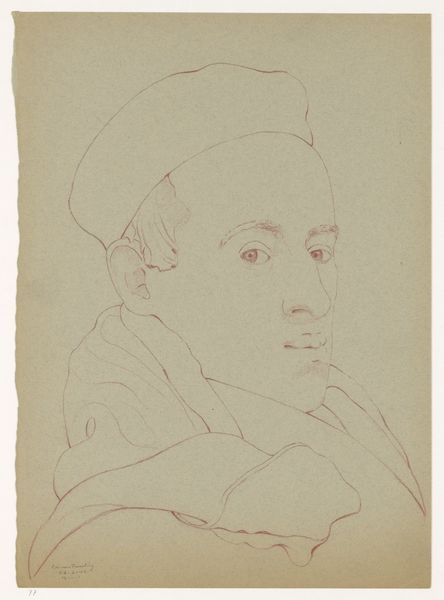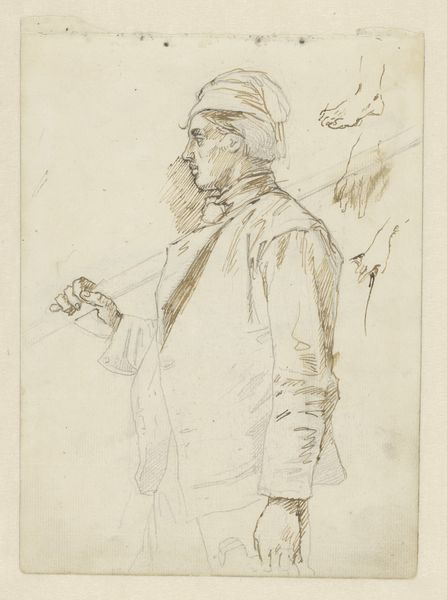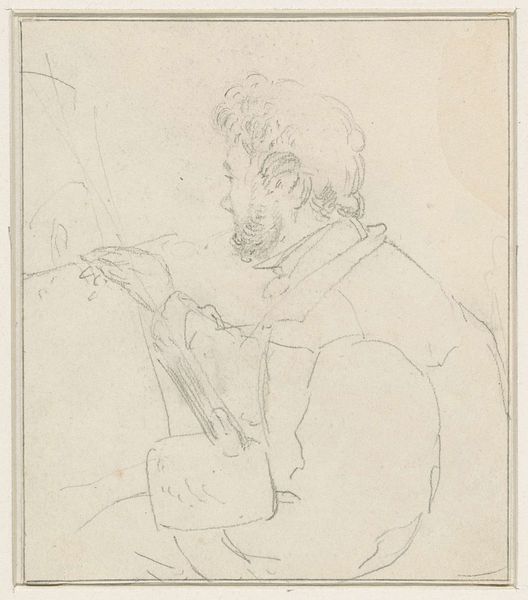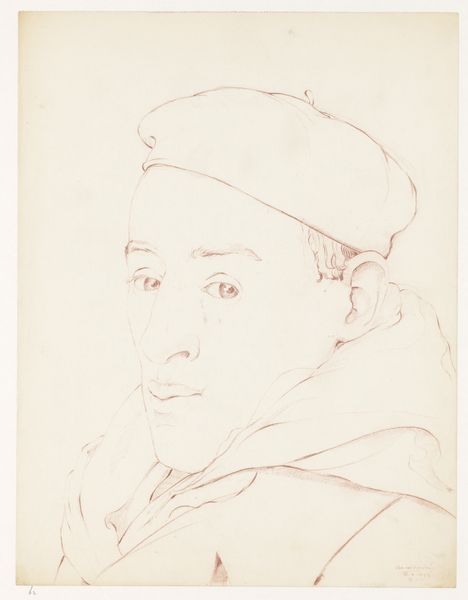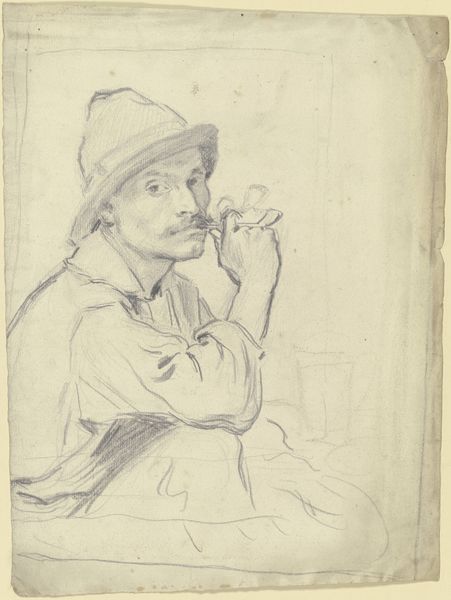
Bildnis eines rauchenden bayerischen Soldaten, einem Reisegefährten des Künstlers 3 - 1822
0:00
0:00
Copyright: Public Domain
Editor: This is "Bildnis eines rauchenden bayerischen Soldaten, einem Reisegefährten des Künstlers" or "Portrait of a Smoking Bavarian Soldier, a Travel Companion of the Artist" created by Nikolaus Hoff in 1822. It's a pencil drawing. The way the subject is just caught in this momentary act, it feels very personal. What strikes you when you look at this work? Curator: The gaze, certainly, suggests an internal narrative, and it makes me wonder about the romantic idealization of the 'common' man – specifically, the Bavarian soldier. Given the social stratification of the time, was Hoff consciously elevating his travel companion through portraiture, or perhaps examining his own position relative to this individual? Editor: That’s fascinating! I hadn’t considered the class implications. So, Hoff, by drawing this soldier, might be commenting on social hierarchies? Curator: Precisely! Consider the rise of Romanticism at the time; its emphasis on the individual and the "authentic" experience of nature. This work could be viewed through the lens of nationalism and regional identity. The smoking, the soldier’s garb – these are markers of Bavarian identity, but what do they really signify about power, and belonging? Does this idealized representation exclude other identities? Editor: I see. So the seemingly simple act of portraying a smoking soldier becomes a loaded commentary on identity, class, and the rise of national sentiment. I’ll never look at a portrait the same way again. Curator: That's the beauty of engaging with art. It can illuminate complex social dynamics through individual representation.
Comments
No comments
Be the first to comment and join the conversation on the ultimate creative platform.

